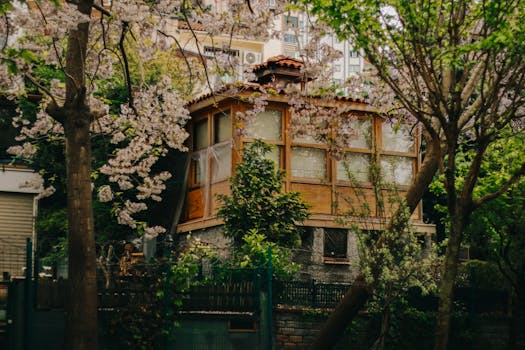
Urban Green Spaces: The Future of Outdoor Living in European Cities by 2025
Urban green spaces are becoming increasingly important in European cities, and for good reason. Urban green spaces are not only beautiful, but they also provide numerous benefits for both the environment and the people who live in these cities. In this article, we will explore the importance of urban green spaces and how they will shape the future of outdoor living in European cities by 2025.
What are Urban Green Spaces?
Urban green spaces refer to any area in a city that is covered in vegetation, such as parks, gardens, green roofs, and even urban farms. These spaces are designed to provide a peaceful escape from the hustle and bustle of city life, while also helping to mitigate the effects of urbanization on the environment. Urban green spaces can be found in a variety of forms, from small gardens on rooftops to large parks that cover entire city blocks.
The Benefits of Urban Green Spaces
Urban green spaces have numerous benefits for both the environment and the people who live in cities. Some of the most significant benefits include:
- Improved Air Quality: Urban green spaces help to purify the air by absorbing pollutants and releasing oxygen.
- Reduced Urban Heat Island Effect: Vegetation in urban green spaces helps to cool the air through evapotranspiration, reducing the urban heat island effect.
- Increased Biodiversity: Urban green spaces provide a habitat for a variety of plant and animal species, increasing biodiversity in urban areas.
- Improved Mental Health: Spending time in urban green spaces has been shown to reduce stress and improve mental health.
- Increased Property Values: Urban green spaces can increase property values by making an area more desirable to live in.
The Future of Urban Green Spaces in European Cities
As we look to the future, it is clear that urban green spaces will play an increasingly important role in European cities. By 2025, we can expect to see a significant increase in the number and quality of urban green spaces in cities across Europe. This will be driven by a growing recognition of the importance of these spaces for both the environment and human health.
One of the key trends that will shape the future of urban green spaces is the use of green infrastructure. Green infrastructure refers to the use of natural systems, such as vegetation and soil, to manage urban environmental challenges, such as stormwater runoff and air pollution. By incorporating green infrastructure into urban design, cities can reduce the burden on traditional infrastructure, such as storm sewers and air purification systems.
Case Studies: Successful Urban Green Spaces in European Cities
There are many examples of successful urban green spaces in European cities. Some notable examples include:
- Hyde Park in London: One of the largest urban parks in Europe, Hyde Park provides a peaceful escape from the hustle and bustle of city life.
- Parc de la Villette in Paris: This urban park in the heart of Paris features a variety of gardens, lakes, and walking trails, making it a popular destination for both locals and tourists.
- Westergasfabriek in Amsterdam: This former gas factory has been converted into a thriving cultural and recreational space, featuring a variety of urban green spaces, including gardens and parks.
Conclusion
In conclusion, urban green spaces are a vital component of European cities, providing numerous benefits for both the environment and human health. As we look to the future, it is clear that these spaces will play an increasingly important role in shaping the future of outdoor living in European cities. By incorporating green infrastructure and prioritizing the creation and maintenance of urban green spaces, cities can create healthier, more sustainable, and more livable environments for their citizens.






